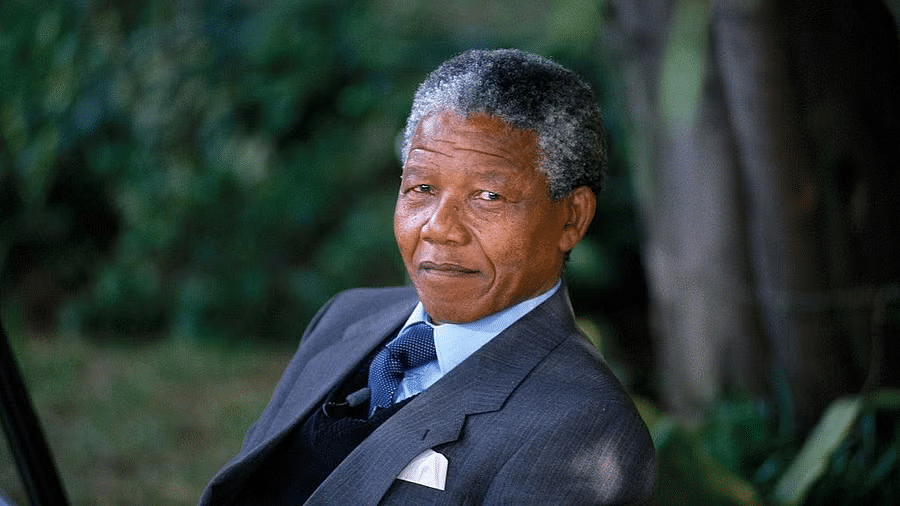Key Points of the Story
- Long Walk to Freedom is the autobiography of Nelson Mandela, who was the former South African President. This article is for Nelson Mandela long walk to freedom summary.
- It includes the description of the inauguration ceremony and citations from his speech and about his journey to being a freedom fighter. It says about the other countless people who fought for their freedom.
- In South Africa, a brutal practice named “apartheid” was very popular in those days. It referred to the discrimination between people on the basis of their race and colour.
- It was one of the most brutal societies in which dark-skinned people were deprived of their basic rights. This lesson gives us an overview of the struggles of Mandela for making the society with no discrimination on the basis of their colour, caste, race, age or gender.

Detailed Summary
10th May 1994 was the day when Nelson Mandela took oath as the first black president of South Africa. The day was significant for the South African soil as no such huge gatherings of international leaders had taken place before this day. The ceremony took place in an amphitheater formed by the Union Buildings in Pretoria.It was going to be the day of the start of rule of democratic and non-racial government in the South-African land, after 3 centuries of white rule.
Then he goes on to explain what all happened in the ceremony. The showcase of fighter planes roaring above the Union building while showing support with the democratic and fairly elected government, the medal ceremony. He says two national anthems were sung that day, ‘Nkosi Sikelel-iAfrika’sung by the whites and ‘Die Stem’ sung by the blacks.
During the first decade of the 20th century, white-skinned people of South Africa built the roots of racial discrimination against dark-skinned people. The structure they created formed the basis of one of the harshest, most inhumane, societies the world has ever known. But, during the last decade of the 20th century, the tables have turned to a celebration of everyone in the country irrespective of their race and skin color.

Nelson thanked the African patriots who sacrificed their lives fighting against the injustices caused by the white people of South Africa. He said he wished they could be there on that day to celebrate and have a look at what their sufferings and sacrifices have brought to South Africa.
He takes names of some brilliant personalities formed by the Apartheid rule in South Africa. He says, “It requires such depths of oppression to create such heights of character”. He has learned all the courage from these oppressed men.His lessons from these people “I learned that courage was not the absence of fear, but the triumph over it. The brave man is not he who does not feel afraid, but he who conquers that fear”..He says that the spark in the eyes of people, and constant reassurance from his people kept him going and going until he finally took the oath at the amphitheater on 10th May 1994.
He adds that he was not born with the hunger for freedom. As a boy, he had lived a free life, away from all the restrictions. But as he grew up and became a young boy, he realized that his freedom had already been taken away from him, he craved freedom, and he became hungry to be free. Initially, as a young boy, he longed for freedom such as night outs but as a young man, he longed for the basic and honorable freedoms of achieving my potential, of earning my keep, of marrying and having a family — the freedom not to be obstructed in a lawful life.
Theme /Message
Theme:
- Courage and Resilience:
Mandela's life story emphasizes the central theme of courage and resilience.
He faced numerous obstacles but overcame them through his own strength and determination. - Will Power:
Mandela's success is attributed to his strong willpower and determination.
His achievements showcase the importance of personal courage in overcoming challenges. - Inspiring Example:
The chapter serves as an inspiring example of the fight for justice.
It highlights the power of love, friendship, forgiveness, and unity in the quest for freedom. - Life Lessons:
Mandela's life underscores the key lessons of courage, resilience, and willpower for success.
The theme emphasizes that these qualities are essential for achieving one's goals. - Struggle Against Oppression:
Mandela stands out for his strong faith in justice and his unwavering struggle against oppression.
His story encourages the reader to strive for what is right and fight against injustice.
Message:
- The moral of the story is that the oppressor and the oppressed both lose humanity. One through hatred and the other through oppression and hence both need to be liberated from these inhumane prisons.
- The story also emphasizes the importance of working together for a common purpose, despite differences in race or gender. Finally, it shows that long-term change can only be achieved by a collective effort and not just by an individual’s efforts alone.



